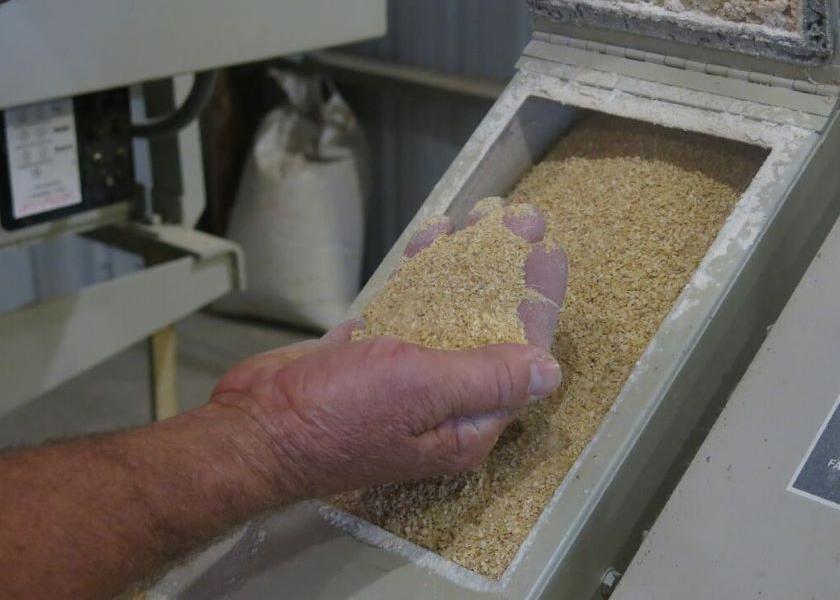The Role of Feed in Disease Spread: The Risk is Real

In January 2014, Scott Dee made a shocking discovery that porcine epidemic diarrhea virus (PEDV) could be transmitted in feed. Eight years later, the scientific journal, Transboundary and Emerging Diseases, released a special issue centered entirely on the topic of feed biosecurity.
Protecting, improving and monitoring the health of animals has always been the goal of the veterinary profession. Along the way, veterinary medicine has discovered and identified many ways pathogens could enter animal populations, including infected breeding stock and semen, contaminated transport, fomites and aerosols. The result of these discoveries are science-based biosecurity protocols to reduce or eliminate these risks.
“The ability of feed and feed ingredients to serve as vehicles for the transport and transmission of viral pathogens is a new discovery, previously thought not to occur, and therefore ignored at the level of the classroom, the farm, government administration, global animal health organizations and elected officials,” Dee says. “It’s humbling to see this come full circle from a very early field observation that we proved scientifically could happen.”
Feed Risk is Real
In December 2020, Dee, DVM and director of research for Pipestone, was approached by the editor of Transboundary and Emerging Diseases to organize and lead this effort to produce a special issue on feed biosecurity. Dee enlisted the efforts of his colleague and long-time friend Gordon Spronk, DVM, of Pipestone, to serve as a guest editor.
The outcome is a special issue featuring 16 new studies that not only validates the importance of this topic, but also proves feed risk is real, Dee says.
“It’s overwhelming to look at the volume and the impact of the research, as well as everything else that's been published during the eight years prior to the issue. The quantity of information is amazing for a new frontier in science,” he says. “This issue tells a story from the beginning with my editorial providing the roadmap, then the reviews, then the case studies, then the new research and science, and finally, what the industry is doing about it.”
This issue ushers in the concept of “Next Generation Biosecurity,” raising awareness of the risk of feed and the need for a science-based program to biosecure feed and feed ingredients as they move between countries and between farms.
Specific examples of this next-generation approach include the national programs in Canada and Australia, both of which incorporate certification, inspection, auditing and mitigation efforts to safely manage the entry of high-risk feed ingredients from high-risk counties, Dee says. The U.S. swine industry is developing standards for a national feed safety biosecurity protocol under the umbrella of the U.S. Swine Health Improvement Plan, with the goal of implementing a science-based ‘Responsible Imports’ approach to the risk management of feed.
Dig Into the Data
“The swine industry is very technical,” Dee says. “And they like data. They depend on data to help them with decisions.”
The issue contains a collection of timely and accurate field observations that were linked in scientific rigor through data from controlled experiments, real-time reporting and peer-reviewed publications, resulting in implementation of validated interventions at the level of the farm, he explains.
“This information has changed and continues to change human behavior regarding the management and movement of feed and feed ingredients, all in service of the greater good of global agriculture, striving for healthier animals, lower costs and an abundance of highly nutritious food for all,” Dee says.
Issue topics include:
• Can we effectively manage parasites, prions, and pathogens in the global feed industry to achieve One Health?
• New perspectives for evaluating relative risks of African swine fever virus contamination in global feed ingredient supply chains
• Interventions to reduce porcine epidemic diarrhea virus prevalence in feed in a Chinese swine production system: A case study
• Feed or feed transport as a potential route for a porcine epidemic diarrhoea outbreak in a 10,000-sow breeding herd in Mexico
• The risk and mitigation of foot-and-mouth disease virus infection of pigs through consumption of contaminated feed
• Stability of Senecavirus A in animal feed ingredients and infection following consumption of contaminated feed
• Detection of African swine fever virus in feed dust collected from experimentally inoculated complete feed using quantitative PCR and virus titration assays
• Sampling and detection of African swine fever virus within a feed manufacturing and swine production system
• Effect of mixing and feed batch sequencing on the prevalence and distribution of African swine fever virus in swine feed
• Monoglyceride reduces viability of porcine epidemic diarrhoea virus in feed and prevents disease transmission to post-weaned piglets
• An analysis of select swine feed ingredients and pork products imported into the United States from African swine fever virus affected countries
• Assessment of soy-based imports into the United States and associated foreign animal disease status
• Evidence of viral survival in representative volumes of feed and feed ingredients during long-distance commercial transport across the continental United States
• Rethinking the uncertainty of African swine fever virus contamination in feed ingredients and risk of introduction into the United States
• African swine fever risk and plant-based feed ingredients: Canada's approach to risk management of imported feed products
• Feed safety collaborations: Experiences, progress and challenges
The special issue is available here for swine producers and industry professionals.
“To me, it's probably the biggest thing I've ever done as a professional, bringing this along with Gordon who really helped me out because we are able to split the workload 50/50,” Dee says. “It’s been very well received in the scientific arena.”
More from Farm Journal's PORK:
Manage ASF Risk: Where Are Your Feed Ingredients Sourced?
African Swine Fever Survives in Feed, Now What?
Why We Need a New Partnership Between Swine Farms and Packing Plants
Purdue Researchers Design New African Swine Fever Risk Assessment Tool







